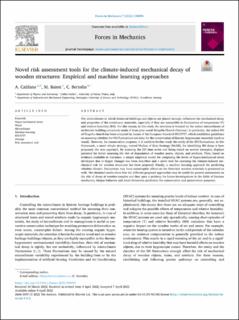| dc.description.abstract | The microclimate in which historical buildings and objects are placed strongly influences the mechanical decay and properties of the constituent materials, especially if they are susceptible to fluctuations of temperature (T) and relative humidity (RH). For this reason, in this work, the attention is focused on the indoor microclimate of an historic building completely made of Scots pine wood: Ringebu Church (Norway). In particular, the indoor RH of Ringebu church has been analyzed by means of the European Standard EN15757, which establishes guidelines on assessing whether the RH fluctuations are risky for the conservation of historic hygroscopic materials (such as wood). However, for conservation purposes, it is useful to further study the entity of the RH fluctuations. In this framework, a novel simple strategy, named Median of Data Strategy (MoDS), for identifying RH drops is here proposed; the new approach, by scanning the RH time series and being tested on several examples, displays potential for better assessing the risk of degradation of wooden assets, objects, and artefacts. Then, based on evidence available in literature, a simple empirical model for computing the levels of hygro-mechanical stress developed due to hygric changes has been described and a novel tool for assessing the climate-induced mechanical risk for wooden structures has been proposed. Finally, a machine learning approach for predicting whether climatic fluctuations may have catastrophic effects on the historical wooden materials is presented as well. The obtained results show that the different proposed approaches may be useful for general assessments on the risk of decay of wooden samples and they open a pathway for future investigations in the fields of fracture mechanics, fatigue behavior and smart timeseries prediction for conservation and preservation purposes. | en_US |

